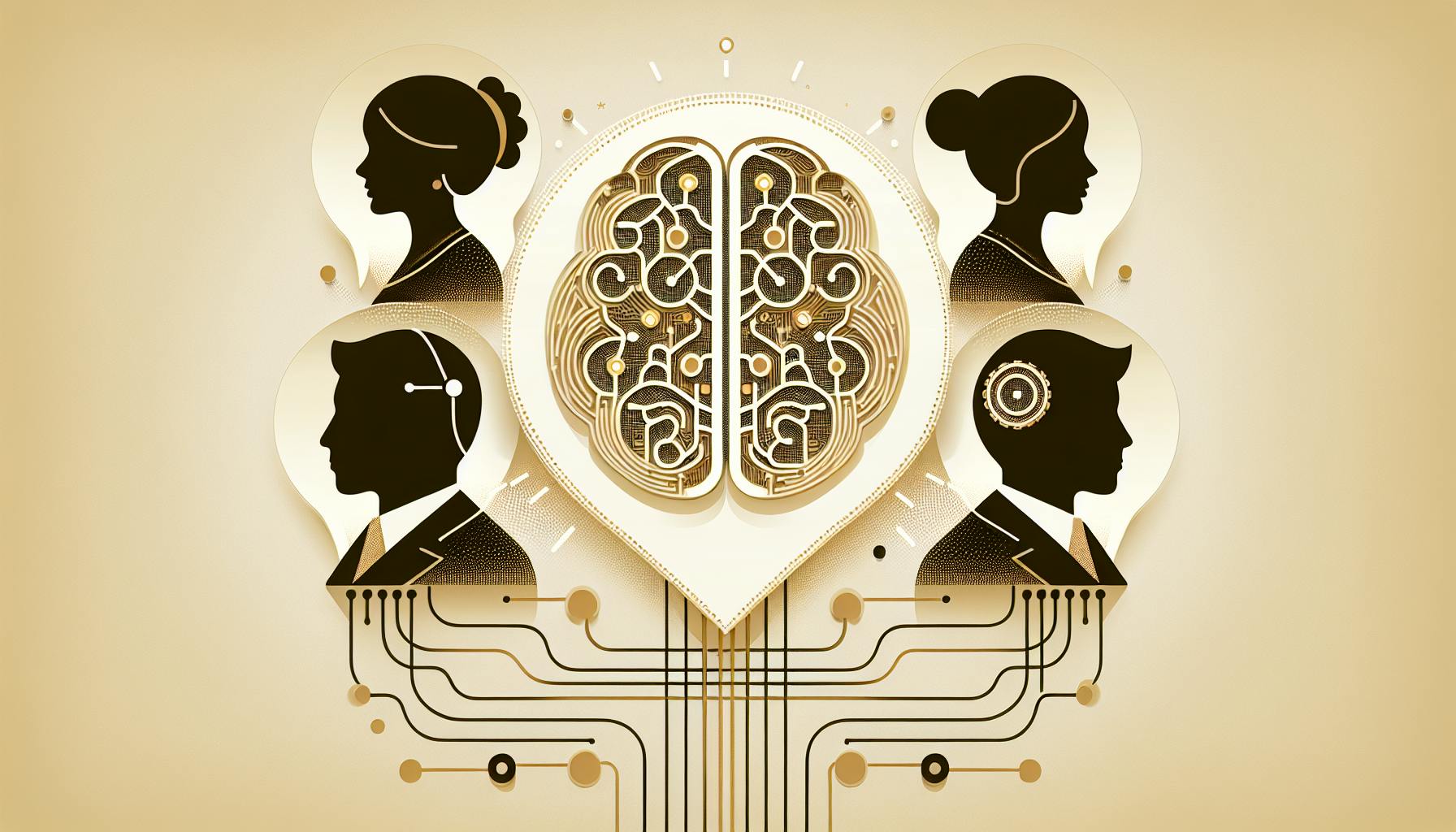Introduction: Customizing ChatGPT for Your Needs
ChatGPT burst onto the scene in late 2022, wowing people with its human-like conversational abilities. This large language model from Anthropic can understand natural language prompts and generate surprisingly coherent and informative responses on a wide range of topics.
While ChatGPT is impressive out of the box, its real power comes from customizing it for your specific needs and interests. Creating your own personalized version of ChatGPT allows you to tap into the strengths of AI while optimizing it to be more relevant, personalized, and equipped with specialized knowledge. With the right approach, you can build your very own AI assistant tailored to you.
The process involves deciding on your assistant's ideal personality, capabilities, and knowledge base. You then choose an appropriate open-source AI model to fine-tune and train on data relevant to your goals. Once your custom model is ready, you can integrate it into apps, websites, and devices through APIs and frameworks.
In this guide, we'll walk through the key steps for creating a ChatGPT agent personalized to your unique requirements. Follow along and you'll have your own AI expert, writer, planner, or any other assistant you can imagine. The possibilities are truly endless when you own chatgpt!
Choosing Your AI Assistant's Personality and Skills
The first step is deciding exactly what you want your AI assistant to be like. This involves thinking about the knowledge domains, conversational style, overall personality and key capabilities that would make it uniquely useful for you.
Knowledge Domains
What topics, industries, hobbies or areas of expertise do you want your assistant to have? Some examples:
- Your specific industry jargon, processes, and use cases
- Deep knowledge of a hobby like gaming, sports, playing guitar, or knitting
- Your personal preferences, habits, and past experiences
- Administrative knowledge of your calendar, contacts, to-do lists, etc.
- Access to unique real-world data like sales records, project info, or research
Personality and Conversational Style
How should your assistant communicate? Some personality examples:
- Serious and formal for a workplace environment
- Casual and humorous for entertainment
- Warm and friendly for customer service
- Sarcastic or dry wit for comedy writing
- Youthful and trendy for a young audience
The conversational style should also fit the personality - upbeat and enthusiastic, analytical, compassionate, outspoken, or soft-spoken.
Capabilities
Outline the key skills you want the assistant to have. Here are some examples:
- Scheduling meetings and managing calendars
- Tracking personal finances and creating budgets
- Data analysis and visualization for business tasks
- Writing assistance like drafting emails, reports, blog posts and other content
- Research abilities like searching, summarizing, and citing sources
- Personalized recommendations for media, restaurants, products, etc based on your preferences
Make sure to define any ethical boundaries or content filtering as well.
Model After Real Examples
Gather examples of real interactions that exemplify your ideal assistant. These could be chat transcripts, emails, meeting notes, or anything that captures the knowledge, style, and capabilities you want.
Choosing an Open-Source AI Model as Your Base
Now that you have a vision for your custom assistant, you need to choose an underlying AI model to build upon. There are a few leading options to consider:
-
GPT-3 (and the GPT-3 API from Anthropic and Cohere): The most powerful, general purpose conversational model available today. Excellent starting point for many assistants.
-
Anthropic's Claude: Specifically designed to be helpful, harmless, and honest. Great conversational abilities and safety.
-
PaLM, Meena, BlenderBot: Other large language models with different strengths to consider.
Some factors when choosing a base model:
-
Performance: How skilled is it at language tasks like classification, summarization, and dialogue?
-
Availability: Can you readily access the model via API today? Some are still research projects.
-
Cost: Models like GPT-3 are costly at scale, while others have free tiers.
For many use cases today, GPT-3 is likely the best starting point - it has the versatility, conversational skill, and accessibility needed to build great assistants. Here are some options for leveraging it:
-
Anthropic's API offers Claude and fine-tuned GPT-3 models. Helpful features like Constitutional AI.
-
Cohere provides affordable access to GPT-3 models of different sizes. Easy to integrate REST API.
-
OpenAI API gives you direct access to the full range of GPT-3 models, but at higher cost.
Once you select a base model, you can begin customizing it to your needs.
Building and Training Your Custom AI Assistant
With access to your chosen API or platform, you can now begin building and training your custom assistant:
-
Collect training data that exemplifies the knowledge domains, personality, and capabilities you outlined earlier. Gather documents, chat logs, manuals - anything relevant.
-
Prepare the data by cleaning, labeling, and formatting it for the training process. For example, you could label data by personality traits or capabilities being demonstrated.
-
Fine-tune the base model by training it on your prepared data to adapt it to your specialized needs. This teaches it your unique data patterns.
-
Prompt engineering involves carefully crafting your input prompts to optimize performance. You can try phrasing prompts positively, being conversational, or asking clarifying questions.
-
Iterate and re-train as you collect new data over time. Your assistant will continue to improve.
With diligence and quality data, your AI agent will become an expert tailored to you. Patience and experimentation are key throughout the training process.
Integrating Your AI Assistant Into Apps and Devices
Once your custom model is trained and performing well, it's time to integrate it into practical applications. For example:
-
Chatbots for Slack or WhatsApp: Create your own bot with tools like Botfront.
-
Mobile apps with React Native: Add your assistant to apps on iOS or Android.
-
Websites using GPT-3 React UI: Embed a chat widget to engage visitors.
The key is finding the right places and interfaces for your assistant to provide the most value. With the tools available today, you can make it accessible across devices and platforms.
Ethical Considerations for Responsible AI
While AI assistants provide many benefits, it's crucial we use them responsibly and ethically. Here are some best practices to keep in mind:
-
Maintain transparency and avoid overstating capabilities.
-
Implement accountability measures as the creator.
-
Monitor for biases and risks, and mitigate them proactively.
-
Embed principles like honesty and compassion with tools like Constitutional AI.
-
Give users control via safety features and opt-outs.
-
Stay current on expert guidelines for responsible AI.
By proactively considering ethics, you can build an AI that enhances lives while minimizing risks.
Conclusion and Next Steps
Creating your own personalized ChatGPT assistant takes effort but delivers huge value. Follow the key steps we covered:
- Decide on the ideal personality, knowledge, capabilities
- Select the right base model like GPT-3 and access it via API
- Fine-tune the model on custom data relevant to your needs
- Integrate into apps, websites and devices to make it accessible
- Iterate and improve your assistant over time
Start small, be patient, and focus on building uniqueness and relevance tailored to you. With the right strategic approach, you can own chatgpt and have your own AI expert in any domain!
The world of AI is rapidly evolving. As you build your custom assistant, lean on helpful communities and resources for guidance. And most of all, have fun experimenting as you shape this powerful technology into an AI truly personalized for you. The possibilities are endless, so dream big!


